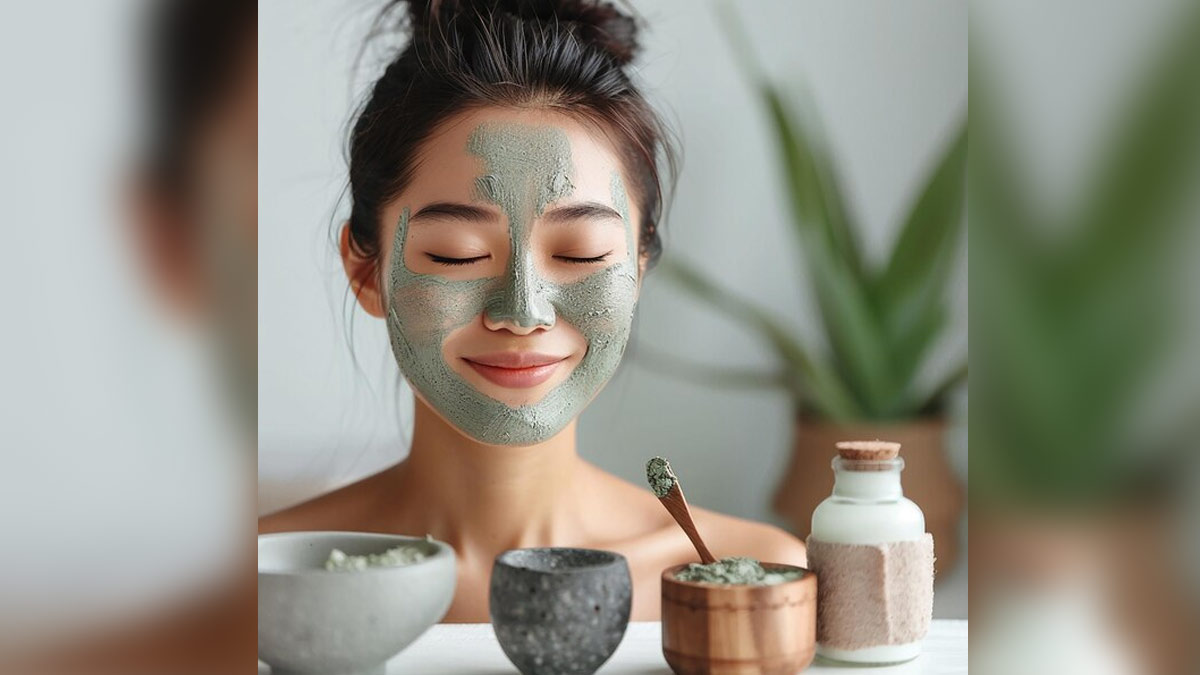
Have you ever wondered why clay masks have been cherished in skincare routines for centuries? These magical masks, known for their deep-cleansing and purifying properties, come in various types, each offering unique benefits tailored to different skin needs. Whether you're looking to detoxify, balance oil production, or soothe sensitive skin, there's a clay mask out there for you. In this article, we list different types of clay masks and how to use them effectively to enhance your skincare routine.
Table of Content:-
According to a 2016 study, clay mineral facial masks can be used to address certain skin conditions, cleanse the skin, or reduce oil production from sebaceous glands. There are various types of clays, each differing in their mineral and chemical composition, colour, and origin.
Types of Clay Masks
Kaolin Clay

Kaolin clay, also known as China clay, is one of the gentlest types of clay. It is ideal for sensitive skin and is often used in products for its mild exfoliating and soothing properties. Kaolin clay absorbs excess oil and impurities without over-drying the skin, making it suitable for all skin types, especially those with dryness or sensitivity. Kaolin and bentonite clays have been shown to effectively absorb excess oil and impurities, making them particularly beneficial for those struggling with severe oily skin and acne, as stated in a 2023 study.
Bentonite Clay
Bentonite clay, a volcanic wonder, is famous for its powerful detoxifying and oil-absorbing properties. It thoroughly cleanses the skin by pulling out impurities and excess oil. A 2017 review of studies found that a lotion containing quaternium-18 bentonite, a type of bentonite clay, could help alleviate symptoms of dermatitis caused by poison ivy and poison oak.
It is often used for oily and acne-prone skin due to its deep-cleansing abilities. However, it can be drying, so it’s best used in moderation.
French Green Clay

French green clay, or illite clay, is renowned for its ability to stimulate blood flow and promote skin regeneration. This clay is a rich source of minerals including calcium, magnesium, and potassium. It is excellent for balancing oil production and tightening the skin, making it a popular choice for those with oily and ageing skin.
Rhassoul Clay
Rhassoul clay, also known as ghassoul or Moroccan clay, is a mineral-rich clay mined from the Atlas Mountains in Morocco. It has been used for centuries for its cleansing and skin-softening properties. Rhassoul clay helps absorb excess oil and impurities while improving skin elasticity and texture.
Pink Clay

Pink clay is a blend of red and white clays, combining the best of both. It combines the detoxifying power of red clay with the gentle soothing qualities of white clay. This clay is ideal for sensitive and dry skin, providing a gentle exfoliation and boosting skin radiance without causing irritation.
How to Use Clay Masks
Using a clay mask correctly is key to achieving the best results for your skin. Follow these simple steps to ensure effective application:
Choose the Right Clay Mask
.jpg)
You should choose a clay mask tailored to your skin type and concerns. For oily skin, opt for bentonite or French green clay. For sensitive or dry skin, kaolin or pink clay is a better choice. If you have normal or combination skin, you can use a variety of clays based on your specific needs.
Prepare Your Skin
Before applying the clay mask, cleanse your face thoroughly to remove dirt, makeup, and excess oil. This helps the mask penetrate deeper into your pores and work more effectively. After cleaning your face, pat it dry with a clean towel.
Mix the Mask
If you’re using a powdered clay mask, mix it with a suitable liquid to form a smooth paste. You can use water, rose water, or a gentle hydrating liquid like aloe vera juice. Check the package for usage instructions. The mixture should be thick enough to apply easily but not so runny that it drips.
Apply the Mask

For a flawless application, use clean fingers or a brush to spread the clay mask evenly across your face, ensuring the delicate eye area remains untouched. Apply a thin, even layer to ensure consistent drying and effectiveness. Be cautious not to apply the mask too thickly, as this can make it harder to remove and may cause skin irritation.
Leave It On
Allow the mask to dry for the recommended time, usually 10-15 minutes. Avoid letting the mask dry completely and crack on your skin, as this can be drying and irritating. If the mask starts to feel uncomfortable, gently rinse it off earlier.
Remove the Mask
Gently rinse the mask off with lukewarm water, using a soft washcloth if needed. Be sure to remove all traces of the mask to prevent residue from clogging pores. Finish by splashing your face with cool water to refresh and tighten the skin.
Moisturise
After removing the clay mask, apply a moisturiser to replenish any lost moisture and soothe your skin. This helps maintain your skin’s natural balance and keeps it feeling soft and hydrated.
Tips for Using Clay Masks
- Patch Test: Always perform a patch test before applying a new clay mask to your face, especially if you have sensitive skin.
- Frequency: Use clay masks 1-2 times a week to avoid over-drying your skin. You can customise the usage according to your skin's needs.
- Hydrate: Drink plenty of water throughout the day to keep your skin hydrated, especially after using a clay mask.
[Disclaimer: This article contains information for informational purposes only, hence, we advise you to consult your own professional if you are dealing with any skin issues to avoid complications.]
Also watch this video
How we keep this article up to date:
We work with experts and keep a close eye on the latest in health and wellness. Whenever there is a new research or helpful information, we update our articles with accurate and useful advice.
Current Version